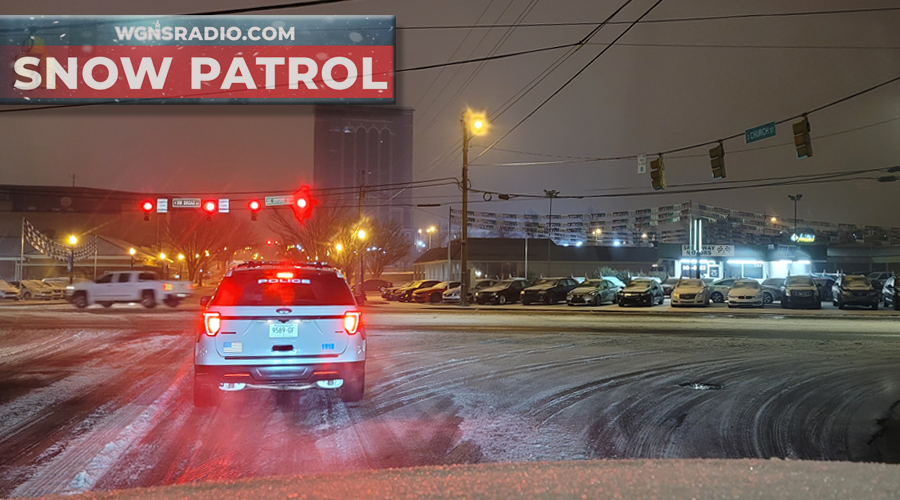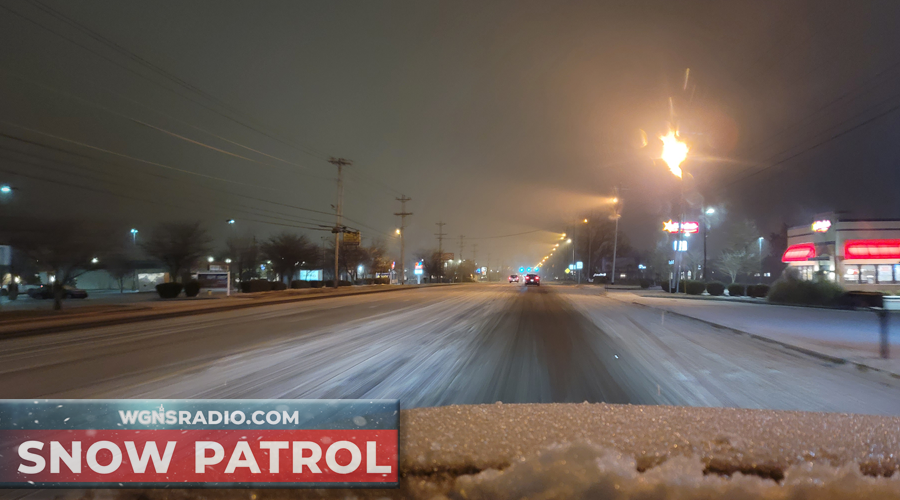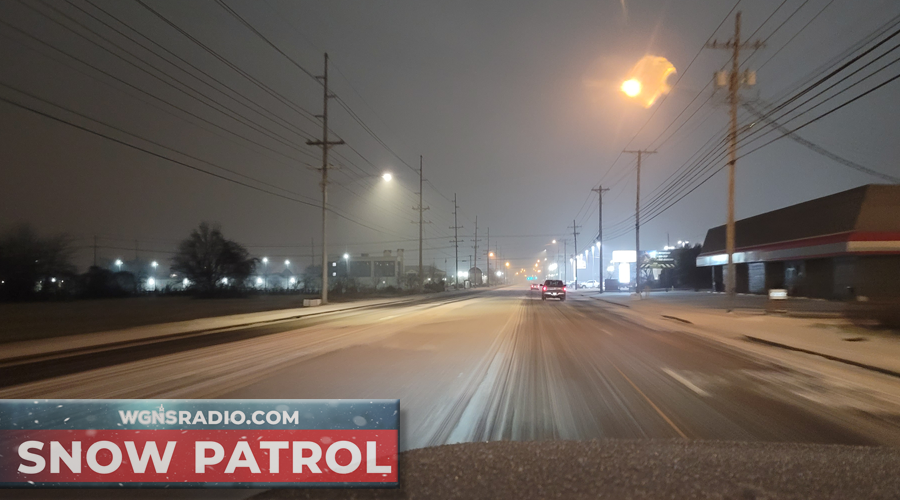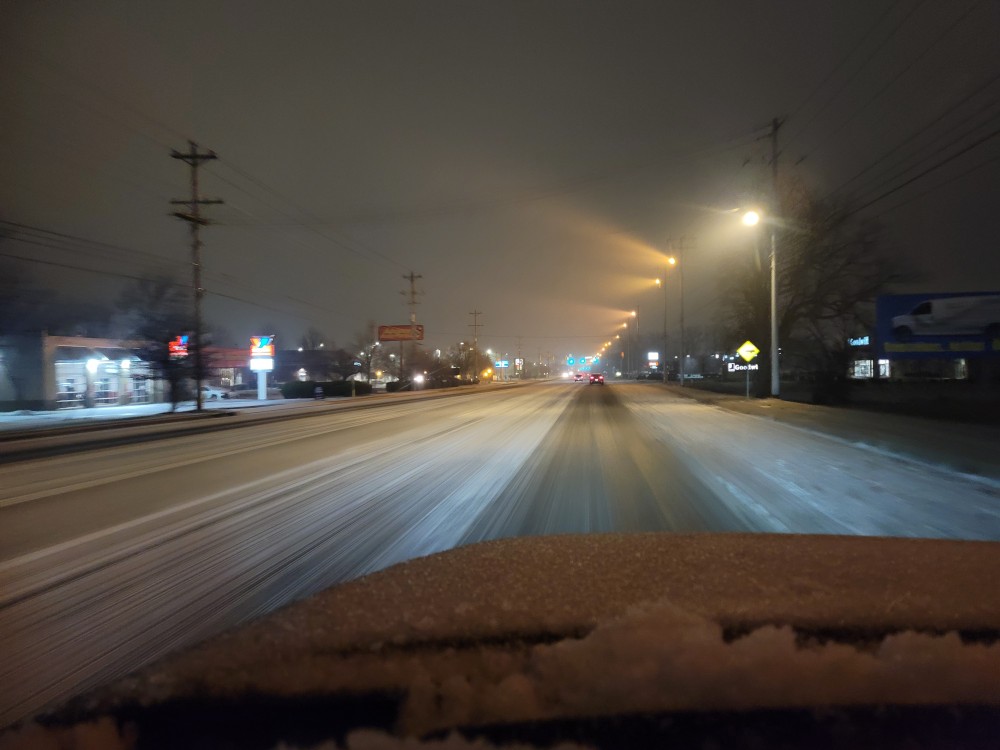Winter storm advisories—and ice storm warnings—across parts of Tennessee
AAA encourages motorists to prepare their vehicles now for sub-freezing temperatures. With nearly one-in-five of all vehicle crashes occurring during winter conditions according to the National Highway Traffic Safety Administration (NHTSA), AAA advises motorists to stay off icy and snowy roads, if possible.
Below - S. Church Street at NW Broad Street in Murfreesboro, TN: 
Wet, cold and icy weather present great challenges to the operating efficiency of your vehicle. AAA offers the following checklist to help prepare your vehicle for cold weather conditions:
• Battery – Have charging system tested by a trained technician - a fully charged battery in good condition is required to start an engine in cold weather.
• Gas – Keep tank at least half full to avoid gas line freeze-up.
• Windshield Washer Fluid – Use one with winter solvent that won’t freeze.
• Engine Coolant – Use one that provides anti-freeze protection down to the lowest temperatures you are likely to encounter.
• Tire Pressure - Check tire inflation pressure on all four tires and the spare. As the average temperature drops, so will tire pressures—typically by one PSI for every 10 degrees Fahrenheit. Proper tire pressure levels can be found in the owner’s manual or on a sticker typically located on the driver’s side door jamb.
• Lights - During winter, working lights become more critical for others to see you. Check the operation of all headlights, taillights, brake lights, turn signals, emergency flashers and back-up lights. Replace any burnt out bulbs.
• Winter Emergency Kit - kit should include a snow shovel, ice scraper, jumper cables, flares or reflectors, a flashlight and some warm clothing, blankets and a fully charged cell phone or charger.
Below - S. Church Street near Veterans Pkwy in Murfreesboro, TN:

Tips for Driving on Ice & in Winter Weather
Driving on ice and in winter conditions can be very challenging. The key to safe driving is to adapt your driving behaviors to these conditions.
Stay home. Only go out if necessary. Even if you can drive well in bad weather, it’s better to avoid taking unnecessary risks by venturing out.
Reduce speed and anticipate delays. Most snow and ice related crashes are caused by vehicles sliding off the road because they are traveling at speeds too great for the road and weather conditions. Posted speed limits are set for driving under optimal, dry conditions. If road and weather conditions are adverse, motorists should operate at a speed well below the posted limit.
Leave extra space between vehicles. Increase your following distance to eight to ten seconds. This increased margin of safety will provide the longer distance needed if you have to stop.
Avoid unnecessary lane changes. Changing lanes increases your chances of hitting ice between lanes, which could cause a loss of traction and, potentially, a crash.
Intersections can be especially slippery as ice thaws from the heat of idling vehicles. Water on top of ice is a very dangerous situation.
Don’t power up hills. Applying extra gas on snow-covered roads will just make your wheels spin. Try to get a little inertia going before you reach the hill and let that inertia carry you to the top. As you reach the crest of the hill, reduce your speed and proceed downhill slowly.
Don’t stop going up a hill. There’s nothing worse than trying to get moving up a hill on an icy road. Get some inertia going on a flat roadway before you take on the hill.
Black ice: Transparent ice may form on the roadway. If you notice ice forming on any object, assume that it is forming on the road surface as well. Bridges are usually the first surfaces to freeze. Drive slowly and, if possible, avoid driving on icy surfaces.
Buckle up: Ensuring that everyone in your vehicle is properly restrained is the single most effective thing motorists can do to keep themselves and their loved ones safe on the roads.
Below - S. Church Street in front of French's Shoes and Boots in Murfreesboro, TN:

During cold snaps, calls for dead batteries and other service-related needs typically increase. AAA offers these additional reminders:
• Always travel with a cell phone and car charger.
• AAA recommends that if motorists become stranded, it is best to stay with the vehicle. If the engine can be started, run it only long enough to keep warm. Make sure the exhaust pipe is snow-free.
• AAA makes it easy to request roadside assistance—by phone (1-800-AAA-HELP), app or onlin e—and members can track the service technician’s progress as they make their way to your vehicle.





